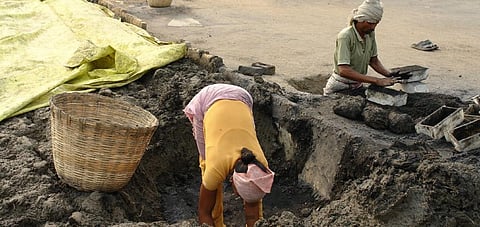

Last year’s lockdown and economic recession due to the novel coronavirus disease (COVID-19) pandemic had devastating consequences on Bihar's informal sector workers and their families, and a new study has assessed the impact.
The survey covered 1,613 rural households across seven districts in different parts of the state: Gaya, Gopalganj, Madhubani, Nalanda, Araria, Purnia and Rohtas.
The study was conducted by the Centre for Development Economics and Sustainability (CDES), Monash University, Australia and the Institute for Human Development (IHD), New Delhi and focused on the first wave of the pandemic.
“The main purpose of the study was to gather ground-level information of the impact of the pandemic on the livelihoods of rural households in Bihar and the extent to which they were able to avail of government support,” deputy director for CDES Gaurav Datt said.
The districts were chosen to represent rural Bihar based on a number of socio-economic indicators decided during an earlier study in 2016-17 by IHD as part of its Bihar Research Programme.
The new study said:
The most widely affected livelihood activities were casual and migrant labour. Every household participating in casual labour was affected. Among those participating in migrant labour, 94 per cent were impacted.
About 18 per cent of casual labour households reported that MGNREGA work was affected, nearly 90 per cent reported casual agricultural labour was affected and 70 per cent reported casual non-agricultural work was affected, it added.
More than half the migrant workers returned to their native villages when work was disrupted in destination areas. They spent Rs 3,000 on average on the return journey each.
Nine of every 10 workers who stayed back in the area of their workplace lost days of work and reduced their remittances back home, the report found.
Less than two-thirds of the migrant labourers found alternative part-time work on returning to their native village. On an average, each returnee lost over 40 datys of work.
Many of them went back to destination areas after spending an average (median) of 149 days in the village. About one-fifth of them had not resumed work in the destination area at the time of the survey.
The study also documented the impact of the pandemic on agricultural activities. About 59 per cent cultivating households reported disruption of at least one agricultural operation for the planted crop, 43 per cent reported unusual difficulty with ploughing / hoeing / land preparation, 53 per cent with sowing or transplanting and 37 per cent with weeding.
Immunisation, free ration distribution hampered
Children below two years in 28 per cent households missed their immunisation since the outbreaks were reported. Around 41 per cent of households with pregnant or lactating women reported being unable to avail ante- and post-natal check-ups, the survey estimated.
Distribution of free ration and cooking gas was disrupted severely, found the study, the reported highlighted:
“Some received nothing despite being eligible. Around 19 per cent eligible households received no free cooking gas cylinders,” the report said.
Around 78 per cent ration card holders received less than the announced free 5 kilogram of rice or wheat per person per month and 91 per cent received less than 1 kg of free pulses per person per month.
The typical (median) cardholding household received 75 per cent of the entitlement, the report showed.
Around 30 per cent of households with women Jan Dhan accounts received less than the announced amount of cash transfer and about 22 per cent received only a single installment of Rs 500 instead of the promised three.
Similarly, nearly three-quarters of households eligible for free cooking gas cylinders received less than the three cylinders as intended by the announced relief measure.
More than three-fifths of widow pension recipients fell short of entitlements by 30 per cent.
The study was particularly interesting because it was carried out at the end of 2020, many months after the lockdown was imposed but still at that a time when people were living in great difficulty, said Jean Dreze, a welfare economist and social scientist.